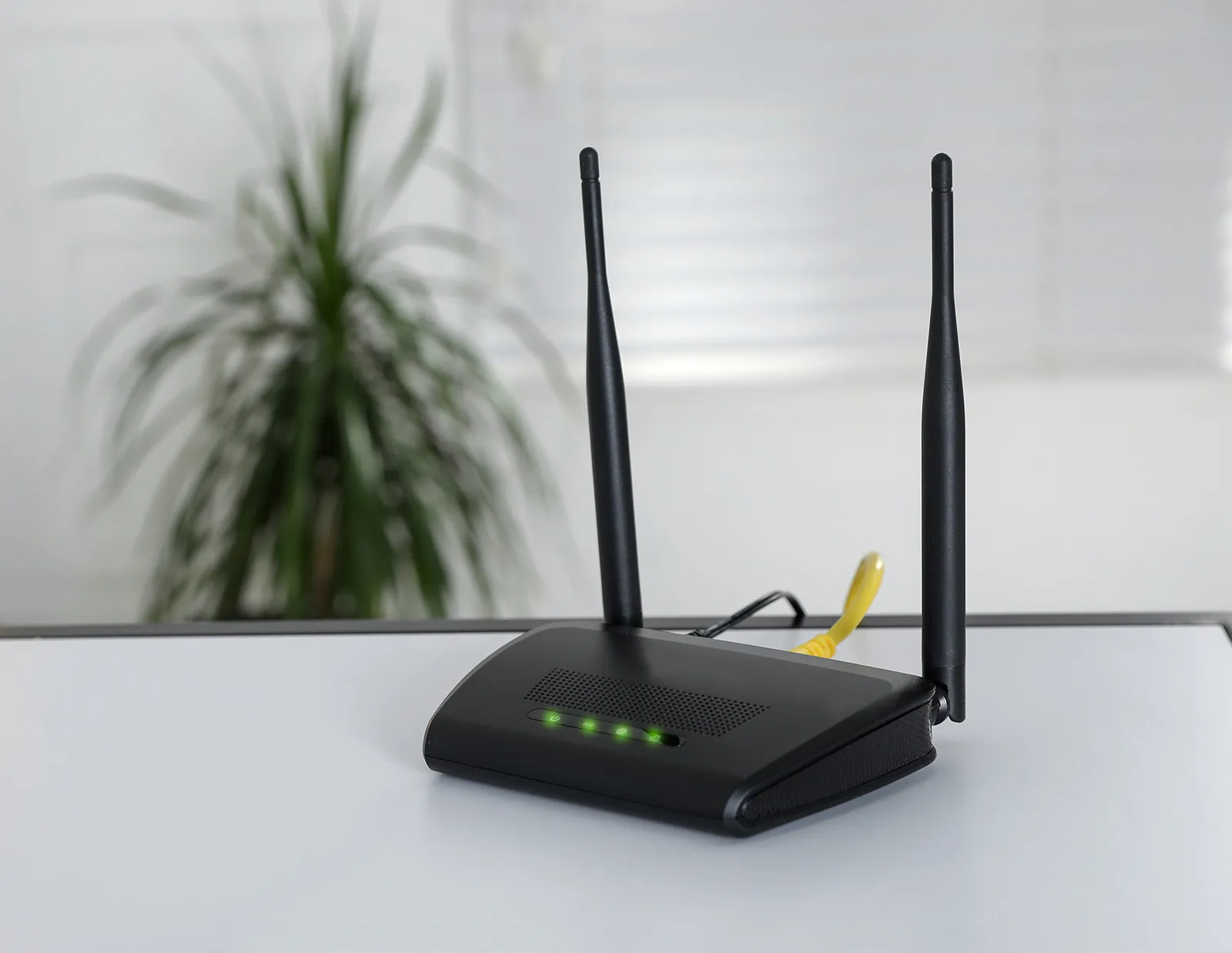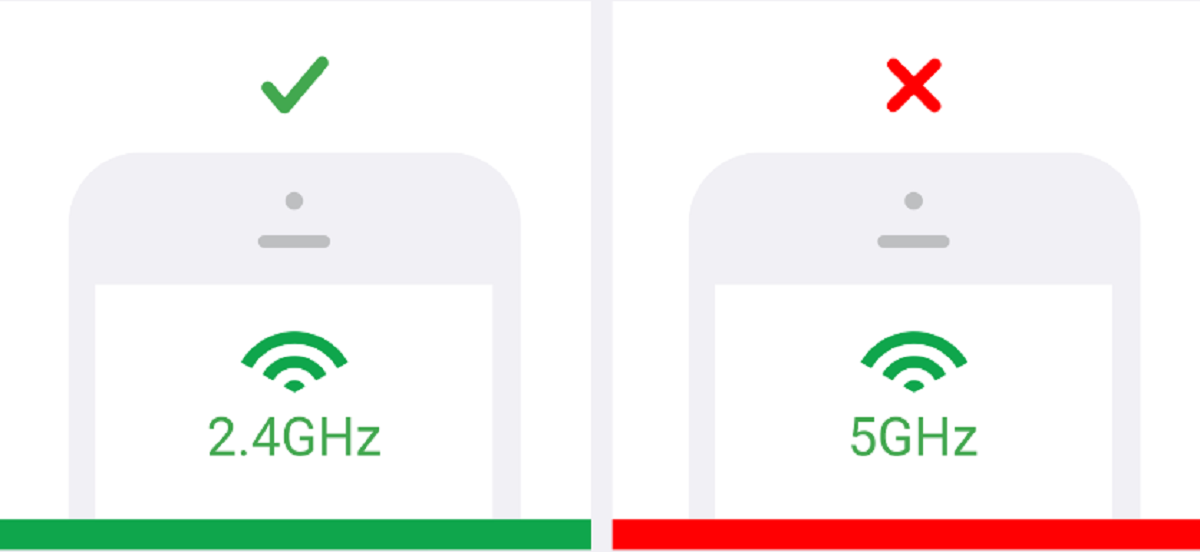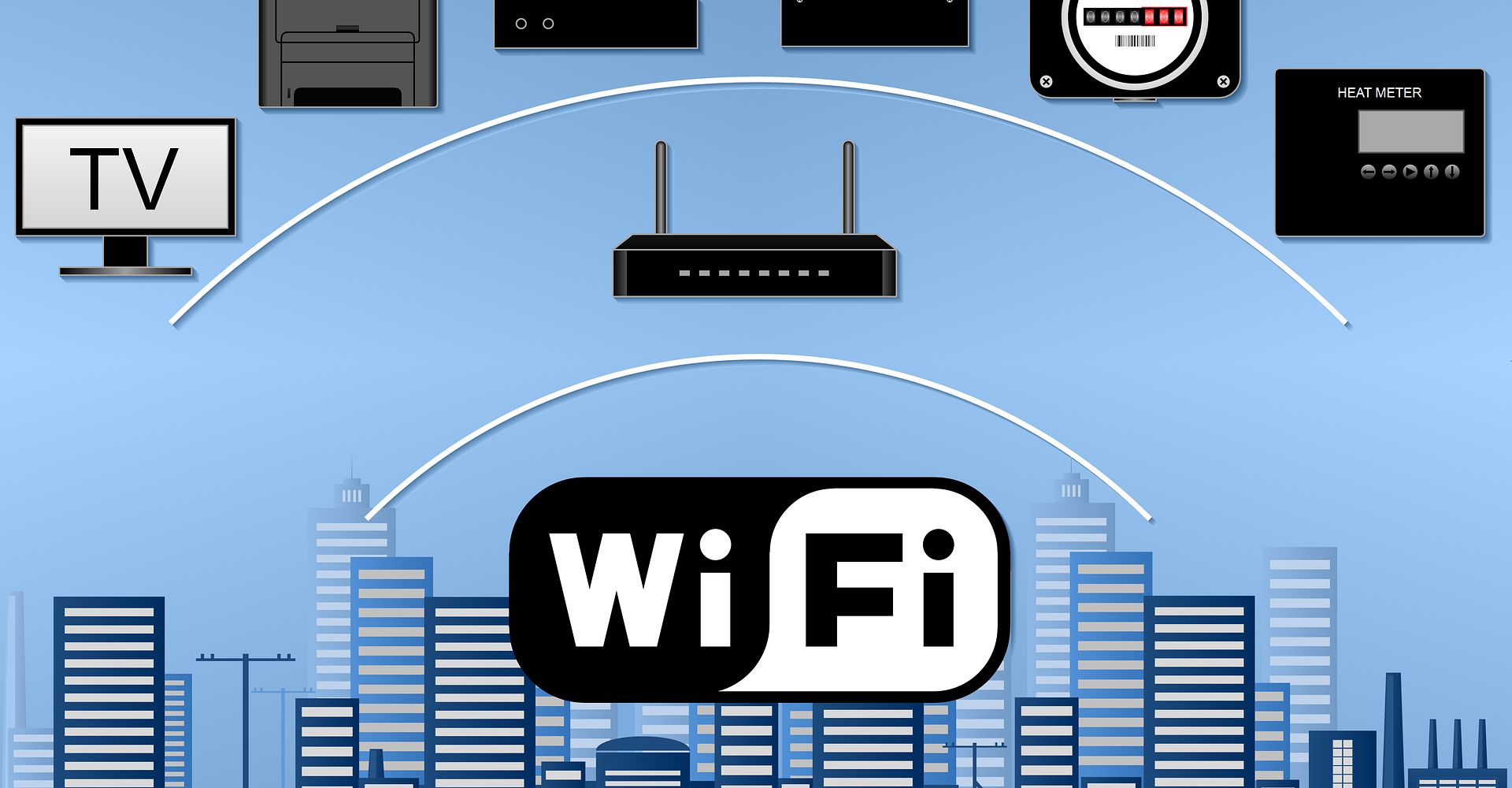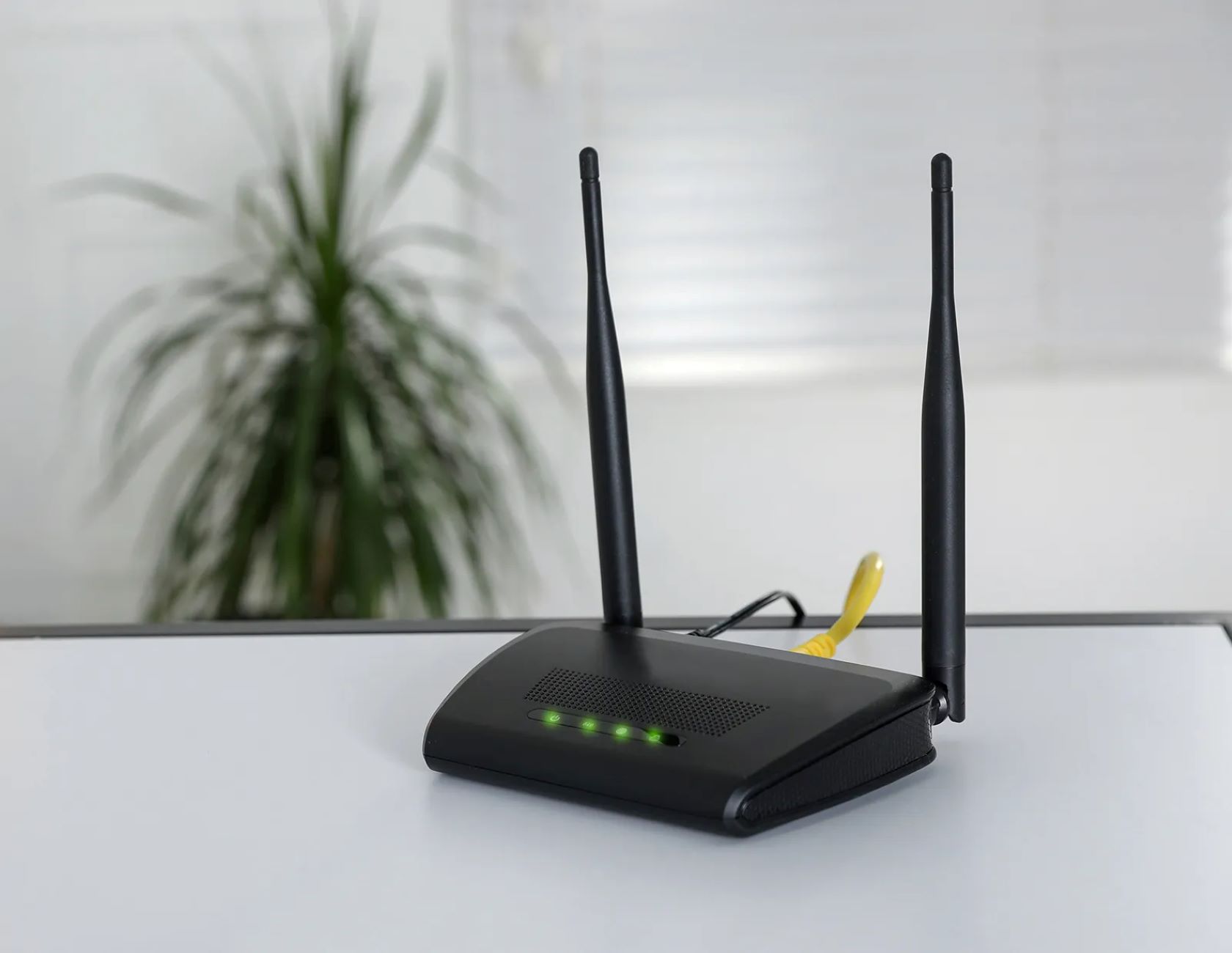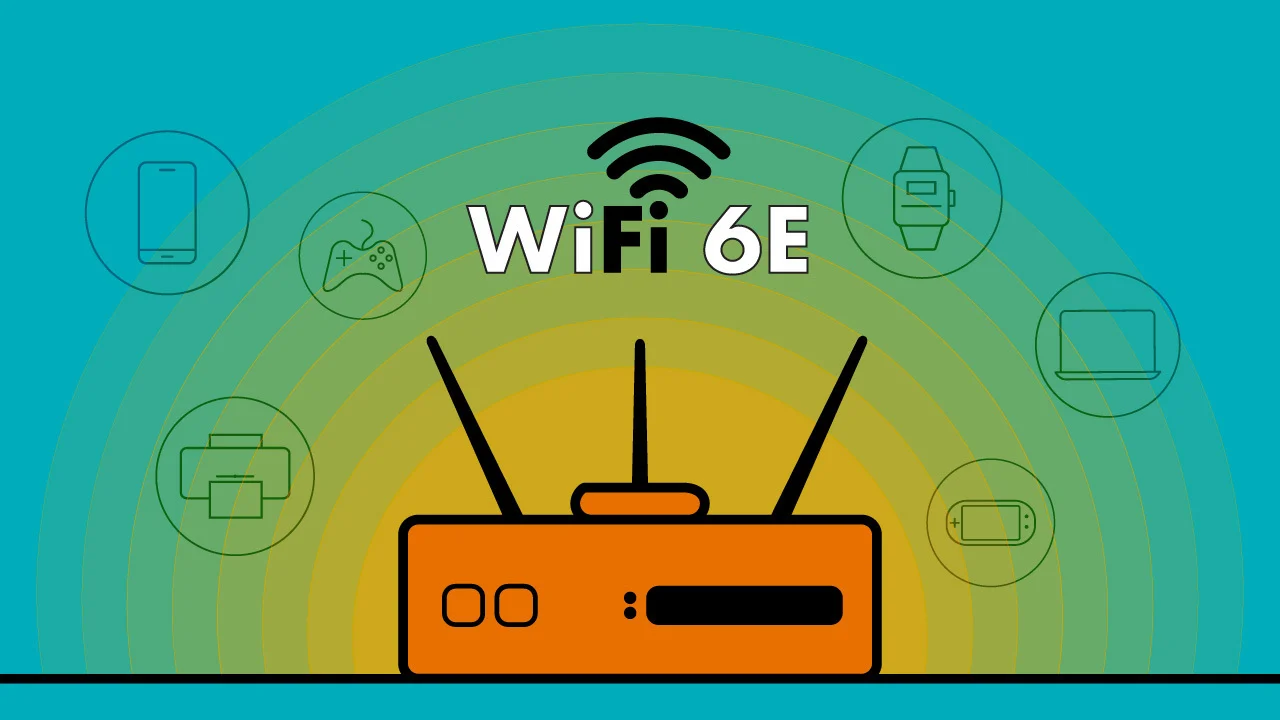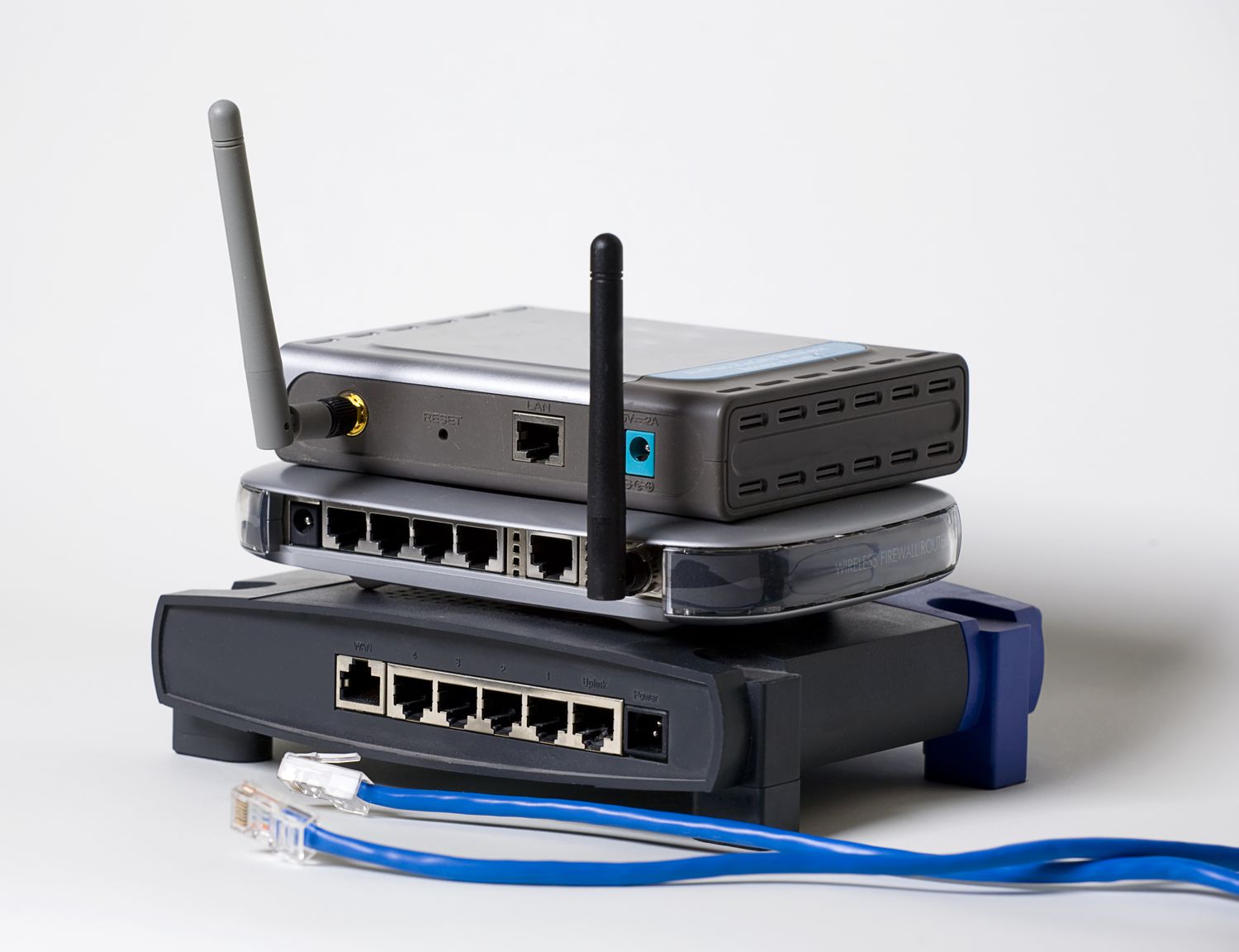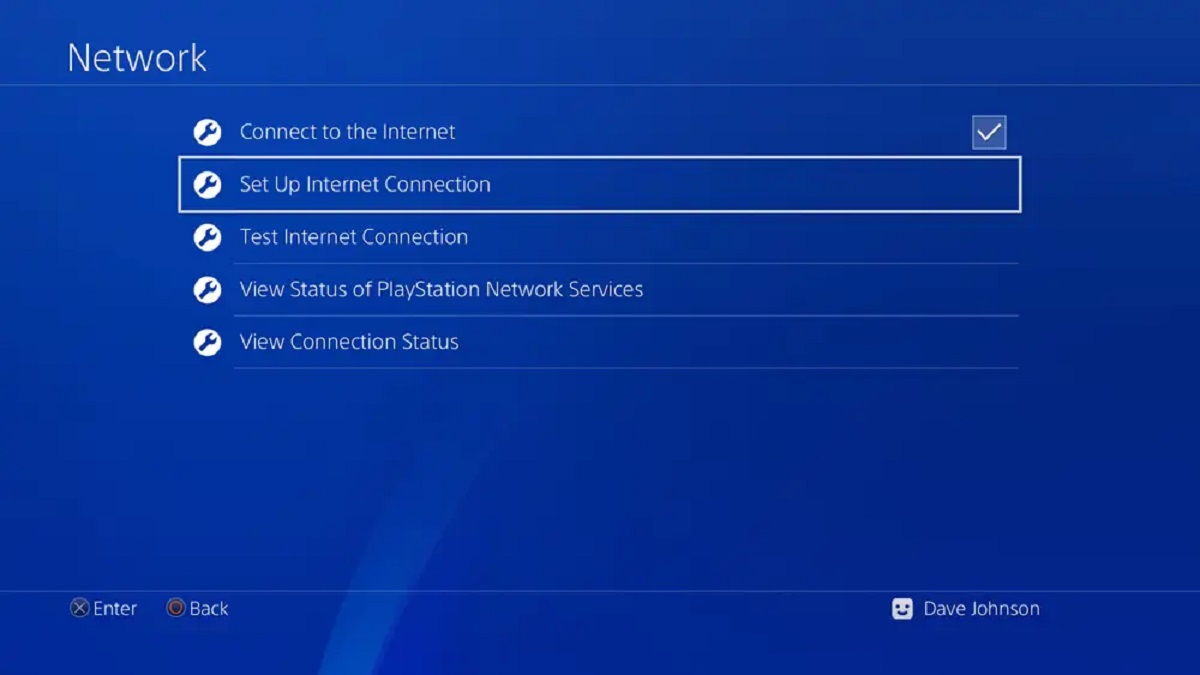Introduction
Welcome to the world of WiFi! In today’s technology-driven society, WiFi has become an essential part of our daily lives. Whether we are at home, work, or even in public spaces, the convenience and connectivity that WiFi provides are undeniable.
But have you ever wondered how WiFi actually works? Or what frequencies it uses to transmit data wirelessly? If you’re curious about the inner workings of WiFi and its frequencies, then you’ve come to the right place. In this article, we will explore the fascinating world of WiFi frequencies and their significance.
WiFi, short for Wireless Fidelity, is a technology that allows electronic devices to connect to the internet or other networks without the need for physical wires or cables. It revolutionized the way we access the internet, enabling us to stay connected from anywhere within the range of a WiFi network.
Understanding how WiFi works requires some basic knowledge of frequencies. Frequency is the number of cycles per second that a wave completes, measured in Hertz (Hz). In the context of WiFi, frequencies refer to the radio frequencies used to transmit and receive data between a WiFi router and a wireless device, such as a smartphone or laptop.
WiFi operates using radio waves, which are a form of electromagnetic radiation. These radio waves oscillate at specific frequencies, allowing them to carry information and transfer data wirelessly. The frequencies used by WiFi fall within two main frequency bands:
- The 2.4 GHz frequency band
- The 5 GHz frequency band
The 2.4 GHz band is the older and more widely used frequency band for WiFi. It offers a longer range but can be more susceptible to interference from other devices, such as cordless phones and microwave ovens. On the other hand, the 5 GHz band provides faster speeds and less interference, but with a shorter range compared to the 2.4 GHz band.
WiFi channels and channel bonding are also important aspects to consider when it comes to WiFi frequencies. WiFi channels are specific frequencies within the frequency bands that are used to transmit data. Channel bonding, on the other hand, allows WiFi devices to use multiple channels simultaneously to increase data transfer speeds.
In this article, we will delve deeper into the differences between the 2.4 GHz and 5 GHz frequency bands, explore their advantages and disadvantages, and discuss the factors that can cause interference in WiFi signals.
So, let’s dive into the world of WiFi frequencies and discover how they shape our wireless connectivity. Get ready to explore the technology behind WiFi and unveil the secrets of its frequency bands.
What is WiFi?
WiFi, short for Wireless Fidelity, is a technology that allows electronic devices to connect to the internet or other networks without the need for physical wires or cables. It is a wireless networking technology that has revolutionized the way we access the internet and communicate with each other.
WiFi operates by utilizing radio waves to transmit and receive data wirelessly. It enables devices such as smartphones, laptops, tablets, and smart home devices to establish a wireless connection to a local network or the internet. This connection is made possible through a device called a WiFi router, which acts as a central hub for data transmission.
With WiFi, we are no longer confined to a specific location or tethered to a wired connection. Instead, we can freely move around within the range of a WiFi network while staying connected to the internet. Whether we are at home, in a café, or at the office, WiFi provides us with the convenience of seamless connectivity.
One of the key advantages of WiFi is its ability to provide high-speed internet access. WiFi enables us to browse the web, stream videos, download files, and engage in online activities without the limitations of a wired connection. This has transformed the way we work, study, and entertain ourselves.
Moreover, WiFi allows multiple devices to connect to the same network simultaneously. This means that multiple users can access the internet and share resources within a local network without interfering with each other’s connection. It has made it easier for households, offices, and public spaces to accommodate the growing number of wireless devices.
WiFi has become an integral part of our daily lives, powering our smartphones, laptops, tablets, gaming consoles, and smart home devices. It is the foundation for the Internet of Things (IoT), where devices can communicate and interact with each other seamlessly.
WiFi technology continues to evolve, with advancements such as WiFi 6 (802.11ax) offering faster speeds, better performance in crowded environments, and improved energy efficiency. These advancements ensure that WiFi remains at the forefront of wireless connectivity and meets the growing demands of our connected world.
In summary, WiFi is a wireless networking technology that allows electronic devices to connect to the internet or local networks without the need for physical cables. It provides us with the freedom and convenience of wireless connectivity, enabling us to stay connected and access information from anywhere within the range of a WiFi network. As technology continues to evolve, WiFi will continue to play a crucial role in our interconnected world.
How does WiFi work?
WiFi works by utilizing radio waves to transmit and receive data wirelessly between devices. It involves a complex process that allows devices to establish a connection and communicate with each other within a WiFi network. Let’s dive into the inner workings of WiFi and understand how it operates.
1. Signal Transmission: A WiFi network consists of two main components: a WiFi router and wireless devices. The router acts as a central hub, transmitting data signals to and from the devices within its range. It converts wired internet signals into radio waves, which can be received by wireless devices equipped with WiFi capabilities.
2. Router Configuration: When setting up a WiFi network, the router needs to be configured with network settings, such as the network name (SSID) and password. These settings ensure the security and identification of the WiFi network, allowing authorized devices to connect.
3. Device Connection: Wireless devices, such as smartphones or laptops, scan for available WiFi networks in their vicinity. When a compatible network is found, the user selects it and enters the network password if required. This initiates the connection process between the device and the WiFi router.
4. Authentication and Association: Once the device connects to the WiFi network, a process called authentication occurs to verify the device’s identity. This ensures that only authorized devices can access the network. After authentication, the device is associated with the router, allowing it to send and receive data.
5. Data Transmission: When a wireless device wants to send or receive data, it uses the available WiFi radio frequencies to transmit signals to and from the router. This data is divided into packets, which are then transmitted over the airwaves.
6. Wireless Interference: WiFi signals can sometimes experience interference from other devices operating on the same frequencies, such as microwaves or cordless phones. This interference can degrade the quality and speed of the WiFi connection.
7. Quality of Service (QoS): To ensure a smooth and reliable connection, WiFi routers implement Quality of Service (QoS) mechanisms. QoS prioritizes certain types of network traffic, such as video streaming or online gaming, to provide a seamless user experience.
8. Range and Coverage: WiFi signals have a limited range, influenced by factors such as distance, obstacles, and signal interference. To extend the WiFi coverage, additional WiFi access points or range extenders can be used to amplify and distribute the signals.
9. Security Considerations: WiFi networks implement various security measures, such as encryption protocols (such as WPA2 or WPA3), to protect data transmission from unauthorized access. Users are also encouraged to use strong and unique passwords to secure their WiFi networks.
In summary, WiFi works by converting wired internet signals into radio waves that can be transmitted and received wirelessly by devices. Through a process of authentication and association, devices can connect to a WiFi router and communicate with other devices within the network. Data is transmitted in packets using WiFi radio frequencies and can be affected by factors such as interference and signal range. WiFi security measures, QoS mechanisms, and range extenders all play a role in ensuring a reliable and secure WiFi connection.
Frequency bands used by WiFi
WiFi operates using radio waves, which are a form of electromagnetic radiation. These radio waves oscillate at specific frequencies, allowing them to carry information and transfer data wirelessly. WiFi frequencies are divided into two main frequency bands: the 2.4 GHz band and the 5 GHz band. Let’s explore these frequency bands and their significance in WiFi connectivity.
1. The 2.4 GHz frequency band: The 2.4 GHz band is the older and more widely used frequency band for WiFi. It offers a longer range and can penetrate obstacles better compared to the 5 GHz band. Many older WiFi devices and routers still operate exclusively in the 2.4 GHz band. However, its popularity has led to increased congestion and interference from other devices, such as cordless phones, baby monitors, and microwaves, as they also operate in the same frequency range. This congestion can lead to slower data speeds and reduced performance in crowded WiFi environments.
2. The 5 GHz frequency band: The 5 GHz band is a newer frequency band used by WiFi, offering faster data transfer speeds and less interference compared to the 2.4 GHz band. It is less congested due to its higher frequency range, allowing for better performance in crowded WiFi environments. However, the 5 GHz band has a shorter range and may not penetrate obstacles as effectively as the 2.4 GHz band. Additionally, not all devices and routers support or operate in the 5 GHz band, so compatibility may be a consideration.
WiFi channels: Within each frequency band, there are multiple WiFi channels available. WiFi channels are specific frequencies within the band that are used to transmit data. The 2.4 GHz band has a limited number of non-overlapping channels, such as 1, 6, and 11, which are commonly used to reduce interference between neighboring WiFi networks. The 5 GHz band provides more available channels, allowing for greater flexibility in channel selection and reducing the likelihood of interference.
Channel bonding: WiFi devices can also utilize channel bonding, which allows for the use of multiple channels simultaneously. This technology can increase data transfer speeds by combining the bandwidth of multiple channels. However, channel bonding is limited to specific channels in each frequency band and might not be supported by all devices and routers.
In summary, WiFi uses radio waves to transmit data wirelessly, and these waves oscillate at specific frequencies within the 2.4 GHz and 5 GHz frequency bands. The 2.4 GHz band provides a longer range but is more susceptible to interference, while the 5 GHz band offers faster speeds but has a shorter range. WiFi channels and channel bonding are utilized to reduce interference and maximize data transfer speeds. Understanding the frequency bands and channels used by WiFi can help optimize network performance and improve the overall wireless connectivity experience.
What is frequency?
Frequency is a fundamental concept in physics and refers to the number of cycles or oscillations that occur in a given time frame. It is typically measured in Hertz (Hz), which represents the number of cycles per second. In the context of WiFi and other wireless technologies, frequency plays a crucial role in transmitting and receiving data wirelessly.
To understand frequency, it’s helpful to think of it in terms of waves. Waves can be visualized as patterns of energy that travel through space. Each cycle of a wave represents a complete back-and-forth motion. The frequency of a wave determines how fast these cycles occur, or how quickly the wave oscillates.
For example, imagine a wave on the surface of a pond after dropping a pebble. If you observe the wave and count how many crests pass a particular point in one second, that number represents the frequency of the wave. Higher frequency waves have more cycles occurring in the same amount of time compared to lower frequency waves.
In the realm of WiFi, frequencies are used to transmit and receive data wirelessly. WiFi networks employ radio waves, which are a type of electromagnetic radiation, to carry information between devices. These radio waves have specific frequencies assigned to them, allowing them to propagate through the air and transmit data.
Frequencies used in WiFi can vary depending on the specific implementation and standards followed. The two primary frequency bands utilized by WiFi are the 2.4 GHz and 5 GHz bands. Within each band, there are numerous channels that WiFi devices can operate on, each with its own specific frequency.
Understanding the concept of frequency is essential in WiFi because it affects the range, speed, and performance of a wireless network. Higher frequencies, such as those in the 5 GHz band, generally offer faster data transfer speeds, but tend to have a shorter range and may be more prone to signal degradation when obstructed by solid objects.
Conversely, lower frequencies, like those in the 2.4 GHz band, have a longer range and better penetration capabilities through obstacles, but may experience more interference from other devices operating in the same frequency range.
By adjusting the frequency and channel settings, network administrators can optimize the performance and reduce interference in WiFi networks. It’s important to note that compatibility with specific frequency bands and channels varies among devices, routers, and standards.
In summary, frequency refers to the number of cycles or oscillations that occur in a given time frame. In the context of WiFi, it represents the specific rate at which radio waves oscillate, allowing for wireless data transmission. Understanding the concept of frequency is essential in optimizing WiFi network performance and ensuring reliable wireless connectivity.
Frequencies used by WiFi
WiFi networks operate using specific frequencies within the radio frequency spectrum. These frequencies allow wireless devices to transmit and receive data wirelessly. The two main frequency bands used by WiFi are the 2.4 GHz band and the 5 GHz band. Let’s explore these frequencies and their significance in WiFi connectivity.
1. 2.4 GHz frequency band: The 2.4 GHz band is the older and more widely used frequency band for WiFi. It offers a longer range and better penetration through walls and other obstacles compared to higher frequency bands. Many older WiFi devices and routers still operate exclusively in the 2.4 GHz band. However, due to its increasing popularity, this band has become crowded, leading to potential signal interference from other devices such as cordless phones, baby monitors, and microwave ovens, which operate in the same frequency range. This interference can impact the performance and speed of WiFi connections in congested areas.
2. 5 GHz frequency band: The 5 GHz band is a newer frequency band used by WiFi networks. It offers faster data transfer speeds and less interference compared to the 2.4 GHz band. The higher frequency of the 5 GHz band allows for more available channels and reduces the likelihood of crowded frequencies in densely populated areas. However, it has a shorter range and may be more susceptible to signal degradation when obstructed by walls or other physical barriers.
WiFi devices in both frequency bands use specific frequencies, referred to as channels, for communication. In the 2.4 GHz band, there are a limited number of non-overlapping channels, such as channels 1, 6, and 11, which are commonly used to minimize interference between neighboring WiFi networks. The 5 GHz band, with its broader frequency range, offers more available channels, allowing for greater flexibility in channel selection and reduced interference.
It’s important to note that not all devices and routers support both frequency bands. Older devices may only support the 2.4 GHz band, while newer devices are typically dual-band, capable of operating in both the 2.4 GHz and 5 GHz bands. Network administrators and users need to consider device compatibility and the specific requirements of their WiFi network when selecting the appropriate frequency band.
In summary, WiFi networks utilize the 2.4 GHz and 5 GHz frequency bands to transmit and receive data wirelessly. The 2.4 GHz band offers a longer range but is more susceptible to interference, while the 5 GHz band delivers faster speeds but has a shorter range. Understanding the frequencies used by WiFi networks is crucial in optimizing network performance and selecting the appropriate equipment for reliable wireless connectivity.
4 GHz frequency band
The 2.4 GHz frequency band is one of the primary frequency bands used by WiFi networks. It has been in use since the early days of WiFi and continues to be widely utilized by various devices and routers. Let’s explore the characteristics, advantages, and considerations associated with the 2.4 GHz frequency band.
Range and Penetration: One of the key advantages of the 2.4 GHz band is its ability to provide a longer range compared to higher frequency bands. The lower frequency of the 2.4 GHz band allows the signals to propagate further and penetrate through walls and other physical barriers more effectively. This makes it suitable for applications that require connectivity over a large area, such as in homes, offices, or public spaces.
Interference: While the 2.4 GHz band offers good range and penetration, it is also more susceptible to interference from other devices. Many household devices, such as cordless phones, baby monitors, and microwave ovens, operate in the 2.4 GHz frequency range. When these devices are in close proximity to a WiFi network, they can cause signal interference and affect the performance of the WiFi connection. In areas with heavy WiFi usage, such as apartments or urban areas, the 2.4 GHz band can become crowded and lead to congestion and decreased signal quality.
Channel Selection: The 2.4 GHz band has a limited number of non-overlapping channels available, such as channels 1, 6, and 11. This means that neighboring WiFi networks often share the same or overlapping channels, increasing the likelihood of interference. Network administrators must carefully choose the channel for their WiFi network to minimize interference with nearby networks. Additionally, using channel bonding, which combines multiple channels to increase data transfer speeds, is limited in the 2.4 GHz band due to the small number of available non-overlapping channels.
Compatibility: The 2.4 GHz band has been in use for many years, and as a result, it is widely supported by various devices and routers. Most WiFi-capable devices, including older smartphones, laptops, and IoT devices, are compatible with the 2.4 GHz band. This backward compatibility ensures that devices can connect to WiFi networks even if they do not support the newer 5 GHz band.
In summary, the 2.4 GHz frequency band offers a longer range and better penetration through physical barriers compared to higher frequency bands. It is compatible with a wide range of devices and routers, making it suitable for many WiFi applications. However, the 2.4 GHz band is prone to interference from other devices operating in the same frequency range and has limited non-overlapping channels, which can lead to congestion and reduced signal quality in crowded WiFi environments. Network administrators and users must consider these factors when setting up and optimizing WiFi networks that operate in the 2.4 GHz frequency band.
5 GHz frequency band
The 5 GHz frequency band is a newer addition to WiFi technology and offers several advantages over the 2.4 GHz frequency band. This band provides faster data transfer speeds and is capable of delivering enhanced performance in WiFi networks. Let’s explore the characteristics, benefits, and considerations associated with the 5 GHz frequency band.
Speed and Performance: One of the major advantages of the 5 GHz band is its ability to deliver faster data transfer speeds compared to the 2.4 GHz band. This higher frequency band allows for more available channels and wider bandwidth, enabling devices to transmit and receive data at accelerated rates. The increased bandwidth provides a seamless experience for bandwidth-intensive activities such as HD streaming, online gaming, and large file transfers.
Less Interference: The 5 GHz band experiences less interference compared to the crowded 2.4 GHz band. Many household devices and appliances operate in the 2.4 GHz range, including cordless phones, baby monitors, and microwave ovens, causing potential signal interference. In contrast, the 5 GHz band is less congested, with fewer devices operating in this frequency range. This reduced interference contributes to a more stable and reliable WiFi connection.
Range and Penetration: The trade-off for the increased speed of the 5 GHz band is a reduced range compared to the 2.4 GHz band. Higher frequency signals have a shorter wavelength, which can limit their ability to penetrate walls and other obstacles. While the 5 GHz band may not cover as much distance as the 2.4 GHz band, its shorter range is advantageous in densely populated areas where multiple WiFi networks might overlap.
Channel Availability: The 5 GHz band offers more available channels compared to the 2.4 GHz band. With a broader frequency range, there are multiple non-overlapping channels to choose from, reducing the chances of interference from neighboring networks. This channel availability allows for a greater level of customization and optimization in WiFi network configurations.
Compatibility: Not all devices and routers support the 5 GHz band, especially older devices that were designed before the widespread adoption of this frequency. However, most modern devices, such as newer smartphones, tablets, and laptops, support the 5 GHz band, ensuring compatibility with WiFi networks that operate in this frequency range. Dual-band routers are capable of operating in both the 2.4 GHz and 5 GHz bands, providing flexibility for connecting a wide range of devices.
In summary, the 5 GHz frequency band offers faster data transfer speeds, reduced interference, and more available channels compared to the 2.4 GHz band. While it has a shorter range and may not penetrate through obstacles as effectively, the 5 GHz band delivers enhanced performance in densely populated areas and bandwidth-intensive applications. With the growing popularity and compatibility of the 5 GHz band, it has become an increasingly preferred choice for WiFi networks seeking high-speed and reliable connectivity.
WiFi channels and channel bonding
WiFi channels and channel bonding play a crucial role in optimizing the performance and reducing interference in WiFi networks. By understanding the concept of channels and how channel bonding works, we can enhance the efficiency and speed of our wireless connections. Let’s explore WiFi channels and channel bonding in more detail.
WiFi Channels: WiFi channels are specific frequencies within the frequency bands used by WiFi networks. In the 2.4 GHz band, there are a limited number of non-overlapping channels available, typically channels 1, 6, and 11. These channels are widely used to minimize interference between neighboring networks. The 5 GHz band, with its broader frequency range, provides more available channels, allowing for greater flexibility and reduced interference from nearby networks.
Interference and Overlapping Channels: Interference can occur when neighboring WiFi networks operate on the same or overlapping channels. This interference can result in reduced signal quality and slower data transfer speeds. To minimize interference, network administrators must carefully select a channel that is least congested and does not overlap with nearby networks. Various WiFi analyzer tools are available to help identify the least congested channels in a specific area.
Channel Bonding: Channel bonding is a technique that allows WiFi devices to use multiple channels simultaneously to increase data transfer speeds. This technique is primarily used in the 5 GHz band, which provides more available channels for bonding. By employing channel bonding, devices can utilize a wider frequency range and aggregate the available bandwidth to enhance performance. However, it’s important to note that not all devices and routers support channel bonding, and it requires compatible hardware and software.
Benefits and Considerations: Channel bonding can significantly improve data transfer speeds for compatible devices, particularly in bandwidth-intensive applications such as HD video streaming and online gaming. However, there are a few considerations to keep in mind. Channel bonding requires sufficient available channels to avoid interference and ensure optimal performance. Additionally, the use of bonded channels reduces the number of channels available for neighboring networks, potentially leading to interference with nearby WiFi networks operating in the same area.
Optimizing WiFi Networks: To optimize WiFi network performance, it’s crucial to carefully select channels that are least congested and available. Network administrators can choose to use non-overlapping channels in the 2.4 GHz band and consider channel bonding in the 5 GHz band, if supported and deemed beneficial. Regular monitoring and adjustment of WiFi channels can help maintain a stable and interference-free connection, maximizing the efficiency of wireless networks.
In summary, WiFi channels and channel bonding play a vital role in optimizing the performance and reducing interference in WiFi networks. Selecting the right channels and utilizing channel bonding in the 5 GHz band can enhance data transfer speeds and minimize interference. By effectively managing WiFi channels, network administrators can ensure a smooth and reliable wireless connection for users in various WiFi environments.
Differences between 2.4 GHz and 5 GHz WiFi
WiFi networks can operate on two primary frequency bands: the 2.4 GHz band and the 5 GHz band. While both bands serve the purpose of providing wireless connectivity, there are significant differences between them in terms of speed, range, interference, and device compatibility. Let’s explore the key differences between 2.4 GHz and 5 GHz WiFi.
Speed: One of the main differences between the two frequency bands is the speed they offer. The 5 GHz band provides faster data transfer speeds compared to the 2.4 GHz band. The wider frequency range of the 5 GHz band allows for more available channels and greater bandwidth, enabling devices to transmit and receive data at accelerated rates. This makes the 5 GHz band suitable for bandwidth-intensive activities like HD streaming, online gaming, and large file transfers.
Range: Another difference lies in the range of the two frequency bands. The 2.4 GHz band has a longer range compared to the 5 GHz band. The lower frequency signals in the 2.4 GHz band can propagate further and penetrate walls and obstacles better. This makes it more suitable for providing WiFi coverage over larger areas, such as homes, offices, or public spaces. The 5 GHz band, with its higher frequency signals, has a shorter range and may face more signal degradation when obstructed by physical barriers.
Interference: The 2.4 GHz band is more susceptible to interference compared to the 5 GHz band due to its popularity and the presence of many household devices that operate within the same frequency range. Devices such as cordless phones, baby monitors, and microwave ovens can cause signal interference, leading to a degradation of signal quality and a potential reduction in data speeds. The 5 GHz band, in contrast, is less congested, with fewer devices operating in this frequency range, resulting in less interference and a more stable WiFi connection.
Compatibility: Compatibility with devices is another differentiating factor. Older devices may only support the 2.4 GHz band and lack support for the 5 GHz band. However, most modern devices, such as newer smartphones, tablets, and laptops, are compatible with both bands, enabling users to connect to WiFi networks regardless of the frequency band being used. Dual-band routers offer flexibility by supporting both the 2.4 GHz and 5 GHz bands, allowing for connections with a wide range of devices.
Channel Availability: The 2.4 GHz band has a limited number of non-overlapping channels, typically channels 1, 6, and 11, which can be crowded in areas with many WiFi networks. The 5 GHz band provides more available channels, reducing the chances of interference and congestion from neighboring networks. This channel availability allows for greater flexibility in channel selection and customization of WiFi network configurations.
In summary, the key differences between 2.4 GHz and 5 GHz WiFi lie in speed, range, interference, compatibility, and channel availability. The 5 GHz band offers faster speeds, while the 2.4 GHz band provides a longer range. The 2.4 GHz band is more prone to interference, while the 5 GHz band experiences less congestion. Compatibility varies, with older devices often supporting only the 2.4 GHz band, while modern devices are typically compatible with both bands. Considerations regarding channel availability and customization also differ between the two frequency bands, impacting network optimization and performance.
WiFi and Interference
Interference can significantly impact the performance and reliability of WiFi networks. WiFi signals can be affected by various sources of interference, including other electronic devices and neighboring networks operating in the same frequency range. Understanding the types of interference and implementing strategies to mitigate them are crucial for maintaining a stable and efficient wireless connection. Let’s explore the relationship between WiFi and interference.
1. Device Interference: Numerous household devices can interfere with WiFi signals. Devices such as cordless phones, baby monitors, microwave ovens, and Bluetooth devices operate on frequencies that overlap with the 2.4 GHz band used by WiFi networks. These devices can cause signal interference, leading to reduced signal quality and slower data transfer speeds.
2. Physical Obstacles: Physical obstacles such as walls, floors, and other structural elements can impede WiFi signals and cause signal degradation. The ability of WiFi signals to penetrate these obstacles depends on the frequency used. Higher frequency signals, such as those in the 5 GHz band, have a shorter wavelength and are more easily blocked by walls and structural barriers compared to lower frequency signals in the 2.4 GHz band.
3. Channel Overlapping: WiFi networks operating in close proximity can experience interference if they use the same or overlapping channels. This interference can occur when neighboring networks transmit signals simultaneously, causing signal collisions and degradation. Selecting non-overlapping channels and optimizing channel usage can minimize interference between WiFi networks.
4. Distance and Signal Strength: As WiFi signals travel through space, their strength diminishes over distance. Weaker signals are more susceptible to interference from other devices or external sources of electromagnetic radiation. To ensure a strong and reliable WiFi connection, it is important to position WiFi routers and devices in closer proximity and optimize signal strength through techniques such as using range extenders or mesh networks.
5. Channel Width and Bonding: The width of WiFi channels can impact their susceptibility to interference. Wider channels provide higher data transfer speeds but can be more prone to interference from neighboring networks. Channel bonding, which uses multiple channels simultaneously, can also increase the likelihood of interference. Network administrators need to consider the specific circumstances and optimize channel width and bonding settings accordingly.
6. WiFi Analyzer Tools: WiFi analyzer tools can help identify sources of interference, signal strength, and channel occupancy. These tools allow network administrators to observe network performance, detect interference sources, and make informed decisions to optimize WiFi settings, such as channel selection and transmission power adjustments.
By understanding the potential sources of interference and implementing strategies to mitigate them, WiFi networks can operate at their full potential, delivering reliable and efficient wireless connectivity. Minimizing device interference, optimizing channel usage, and ensuring proper signal strength are crucial steps in maintaining a stable and interference-free WiFi network.
Conclusion
WiFi has become an essential technology that enables wireless connectivity and revolutionizes the way we access the internet and communicate with each other. Understanding the intricacies of WiFi frequencies and how they work is fundamental to optimizing network performance and ensuring a seamless wireless experience.
WiFi operates using radio waves within specific frequency bands. The 2.4 GHz band, with its longer range and compatibility with many devices, remains widely used. However, it can be susceptible to interference from other devices operating in the same frequency range. On the other hand, the 5 GHz band offers faster speeds and reduced interference, making it ideal for bandwidth-intensive applications.
WiFi channels and channel bonding play a crucial role in optimizing network performance. By carefully selecting non-overlapping channels and utilizing channel bonding in the 5 GHz band, network administrators can maximize data transfer speeds and minimize interference from neighboring networks.
Interference poses a challenge to WiFi networks, whether from devices such as cordless phones and microwaves, physical obstacles like walls, or overlapping channels. Understanding and addressing these sources of interference can help maintain a stable and efficient wireless connection.
In conclusion, WiFi technology and its frequencies have transformed the way we connect to the internet and communicate wirelessly. By delving into the details of WiFi frequencies, channels, interference, and optimization, we can unleash the full potential of WiFi networks, ensuring reliable connectivity and enhancing our digital experiences in today’s interconnected world.







